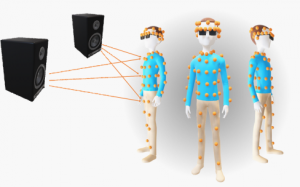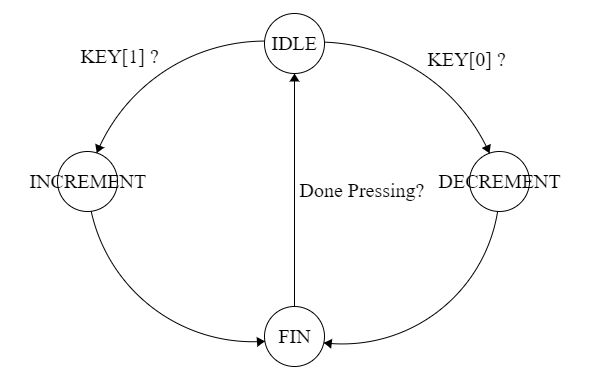This post describes our new wearable microphone impulse response data set, which is available for download from the Illinois Data Bank and is the subject of a paper at ICASSP 2019.

Acoustic impulse responses were measured from 24 source angles to 80 points across the body.
Have you ever been at a crowded party and struggled to hear the person next to you? Crowded, noisy places are some of the most difficult listening environments, especially for people with hearing loss. Noisy rooms are also a challenge for electronic listening systems, like teleconferencing equipment and smart speakers that recognize users’ voices. That’s why many conference room microphones and smart speakers use as many as eight microphones instead of just one or two. These arrays of microphones, which are usually laid out in a regular pattern like a circle, let the device focus on sounds coming from one direction and block out other sounds. Arrays work like camera lenses: larger lenses can focus light more narrowly, and arrays with more microphones spread out over a larger area can better distinguish between sounds from different directions.
Wearable microphone arrays
Microphone arrays are also sometimes used in listening devices, including hearing aids and the emerging product category of smart headphones. These array-equipped devices can help users to tune out annoying sounds and focus on what they want to hear. Unfortunately, most hearing aids only have two microphones spaced a few millimeters apart, so they aren’t very good at focusing in one direction. What if hearing aids—or smart headphones, or augmented reality headsets—had a dozen microphones instead of just two? What if they had one hundred microphones spread all over the user’s body, attached to their clothing and accessories? In principle, a large wearable array could provide far better sound quality than listening devices today.
Over the years, there have been several papers about wearable arrays: vests, necklaces, eyeglasses, helmets. It’s also a popular idea on crowdfunding websites. But there have been no commercially successful wearable microphone array products. Although several engineers have built these arrays, no one has rigorously studied their design tradeoffs. How many microphones do we need? How far apart should they be? Does it matter what clothes the user is wearing? How much better are they than conventional listening devices? We developed a new data set to help researchers answer these questions and to explore the possibilities of wearable microphone arrays.






